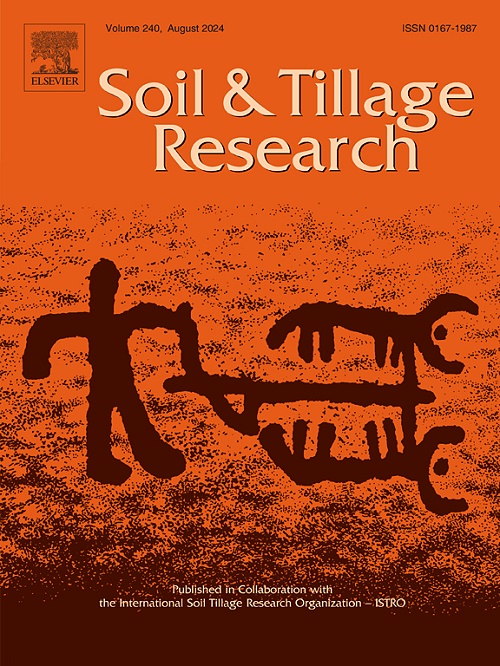Calcium lactate as a soil amendment: Mechanistic insights into its effect on salinity, alkalinity, and aggregation in saline-alkaline soils
IF 6.1
1区 农林科学
Q1 SOIL SCIENCE
引用次数: 0
Abstract
Soil salinization is a problem that threatens agricultural productivity and food security. It occurs when soluble salts, sodium (Na+) and carbonate (CO32-) ions accumulate excessively in the soil. In this study we thoroughly investigate the potential of using calcium lactate (CL) as a soil amendment to mitigate the effects caused by soil salinization. We comprehensively analyze how CL affects soil parameters such, as salinity, colloid morphology and physicochemical properties. Our hypotheses are that CL can effectively counterbalance the adverse soil pH and high salinity conditions in the soil. This happens because CL reacts with free CO32- ions through an acid base neutralization reaction, which helps reduce the alkalinity of the soil. Moreover, this alteration enhances the ion exchange process between calcium (Ca2+) and sodium ions (Na+), resulting in the substitution of Ca2+ ions for Na+ ions attached to the soil particle surfaces. As a result, there is a decrease in the percentage of sodium leading to an improvement in saline soil conditions. Moreover, CL supports the formation of more stable soil aggregates, by bridging and hydrogen bonding processes thereby enhancing soil structure. Furthermore, it promotes the creation of organic mineral composites. Increases storage of carbon in the soil ultimately improving its fertility. When we compare CL to inorganic calcium salts such as CaCl2 and gypsum it becomes apparent that CL is more environmentally friendly, safe and effective, as a soil amendment. Its main purpose is to mitigate soil salinity and improve soil quality.
求助全文
约1分钟内获得全文
求助全文
来源期刊

Soil & Tillage Research
农林科学-土壤科学
CiteScore
13.00
自引率
6.20%
发文量
266
审稿时长
5 months
期刊介绍:
Soil & Tillage Research examines the physical, chemical and biological changes in the soil caused by tillage and field traffic. Manuscripts will be considered on aspects of soil science, physics, technology, mechanization and applied engineering for a sustainable balance among productivity, environmental quality and profitability. The following are examples of suitable topics within the scope of the journal of Soil and Tillage Research:
The agricultural and biosystems engineering associated with tillage (including no-tillage, reduced-tillage and direct drilling), irrigation and drainage, crops and crop rotations, fertilization, rehabilitation of mine spoils and processes used to modify soils. Soil change effects on establishment and yield of crops, growth of plants and roots, structure and erosion of soil, cycling of carbon and nutrients, greenhouse gas emissions, leaching, runoff and other processes that affect environmental quality. Characterization or modeling of tillage and field traffic responses, soil, climate, or topographic effects, soil deformation processes, tillage tools, traction devices, energy requirements, economics, surface and subsurface water quality effects, tillage effects on weed, pest and disease control, and their interactions.
 求助内容:
求助内容: 应助结果提醒方式:
应助结果提醒方式:


